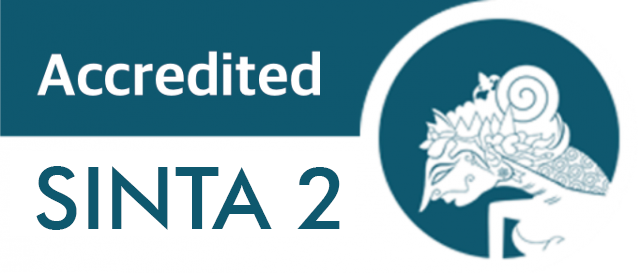Re-Thinking Romanization of Arabic-Islamic Script
DOI:
https://doi.org/10.15408/tjems.v4i1.5549Keywords:
romanization, re-thinking, transliteration, transcription, Arabic-Islamic, romanisasi, meninjau ulang, transliterasi, transkripsi, Arab-IslamiAbstract
Abstract
Arabic Romanization has been revolutionized by the impact of information technology. The driving-force in this regard is the need to make the reading of Arabic scripts through Romanization easier than what it is used to be. The needed vital instrument to achieve this venture requires the invention of transliteration and transcription of Arabic letters into non-Arabic letters which were successfully done in Romanization of Arabic-Islamic Scripts. Thus, the paper attempts to examine the Romanization of Arabic-Islamic Scripts in the twin discipline of Arabic and Islamic Studies in the occidental world. It is a case study research examining the historical evolution of transliteration and transcription of Arabic letters into non-Arabic letters in which the distinction and lack of uniformity of Romanization of Arabic-Islamic Scripts are fully explored. The paper would finally take us through the fundamental role played by the CJKI Arabic Romanization System (CARS) in the recent innovation in the Romanization of Arabic-Islamic Scripts in the twin discipline of Arabic and Islamic Studies in the western-oriented institution of learning. The purpose is to see what element of innovative development ushered in the recent Arabic-Islamic scholarship in the methods of transliteration and transcription of Arabic letters into non-Arabic letters.
Abstrak
Romanisasi Arab telah berevolusi karena dampak teknologi informasi. pendorong hal tersebut adalah adanya kebutuhan untuk membuat pembacaan naskah Arab melalui Romanisasi lebih mudah dari yang digunakan sebelumnya. Instrumen vital yang dibutuhkan untuk mencapai usaha ini memerlukan penemuan transliterasi dan transkripsi huruf Arab menjadi huruf-huruf non-Arab yang berhasil dilakukan dalam Romanisasi Skrip Arab-Islam. Dengan demikian, makalah ini mencoba untuk mengkaji Romanisasi Skrip Arab-Islam dalam disiplin ganda Studi Arab dan Islam di dunia barat. Ini adalah penelitian studi kasus yang meneliti evolusi historis transliterasi dan transkripsi huruf Arab menjadi huruf-huruf non-Arab di mana perbedaan dan kurangnya keseragaman Romanisasi Skrip Arab-Islam sepenuhnya dieksplorasi. Makalah ini akhirnya membawa kita melalui peran mendasar yang dimainkan oleh CJKI Arabic Romanization System (CARS) dalam inovasi baru-baru ini dalam Romanisasi skrip Arab-Islam dalam disiplin ganda bahasa Arab dan studi Islam di institusi pembelajaran yang berorientasi barat. Tujuannya adalah untuk melihat elemen pembangunan inovatif yang mengantar kajian Arab-Islam baru-baru ini dalam metode transliterasi dan transkripsi huruf Arab menjadi huruf non-Arab.
How to Cite : Abdulraheem, B. Adegoke, K.A. (2017). Re-Thinking Romanization of Arabic-Islamic Script. TARBIYA: Journal of Education in Muslim Society, 4(1), 22-31. doi:10.15408/tjems.v4i1.5549.
Permalink/DOI: http://dx.doi.org/10.15408/tjems.v4i1.5549
References
Al Faruqi, I. R. (1995). Toward Islamic English. Riyadh; International Islamic Publishing House.
Badmos, K.S. (2007). ‘Arabic: An Indispensable Cornerstone of Islamic Studies.'Al-Lisan Journal of the Nigeria Association of Teachers of Arabic in Colleges of Education and Allied Institutions (NATACEDAI), 2(3), pp. 15-23.
Habash, N., Soudi, A., &Buckwalter, T. (2007).On Arabic Transliteration. Retrieved on 2/08/2016 from nizarhabash.com/publications/chapter2Bishabash_et_al-2007-web.pdf.
Halpern, J. (2007) CJKI Arabic Romanization System. Retrieved on 23/08/2016 fromwww.cjk.org/cjk/arabic/cars/cars_paper.pdf.
Haroon, M. G. (2003). A discourse on the effects of orientalism on the Muslims and Islamic learning. Journal of the Nigerian Association of Teachers of Arabic and Islamic Studies (NATAIS). 6(3), pp. 32-45.
Jaleel, N. & Larkey, L.S. (2003) Statistical Translation for English-Arabic Cross Language Informational Retrieval. Retrieved on 06/08/2016 from http://ciir.cs.umass.edu/pubfiles/ir-293.pdf.
Mike, L. (2012). Transliteration of Arabic Script in Machine Readable Travel Documents. Retrieved on 23/08/2016 from www.icao.int/Security/mrtd/.
Musa, I. A. (1998). A Critical Study of the Application of the Rules of ‘Ilm al-Tajwid and ‘Ilm al-Qira’at in Nigeria. Unpublished PhD thesis, University of Jos, Nigeria.
Ogunlade, O.O. & Ahmed, A.M. (2011).Higher Education and Curriculum Innovation in Nigeria. In: Durosaro, D.O. & Adegoke, A.A.(Eds). Higher Education and Globalisation. Oyo; Stirling-Horden Publishers Ltd.
Oladosu, A.G.A.S (1985). ‘Education Crises in Nigeria: the Perspective of Arabic Education.’ Journal of the Nigerian Association of Teachers of Arabic and Islamic Studies (NATAIS). Vol. 2,pp. 1-13..











